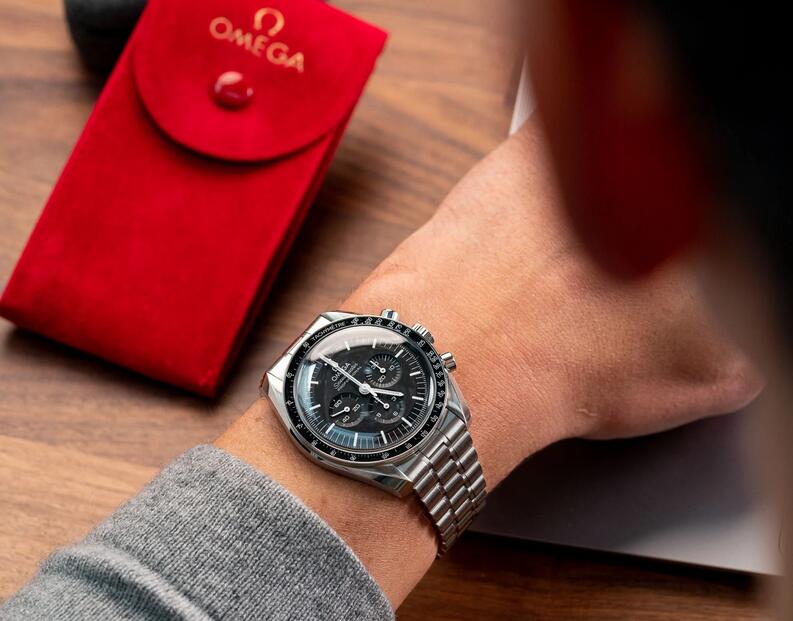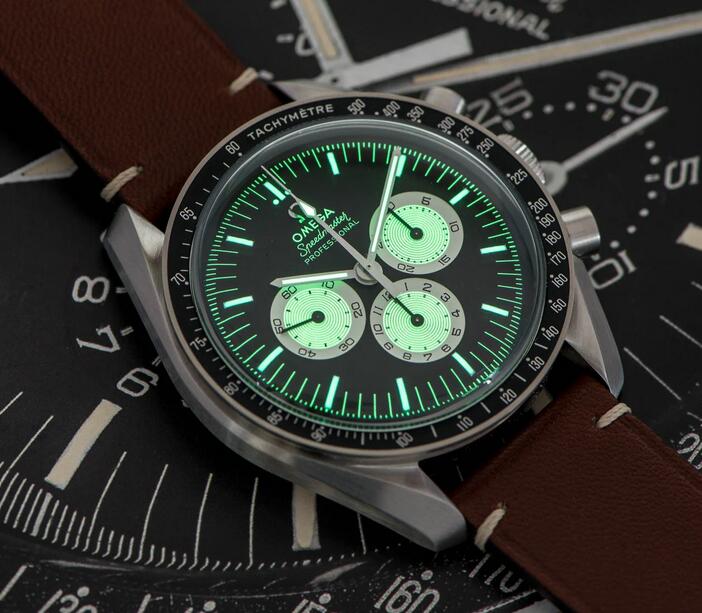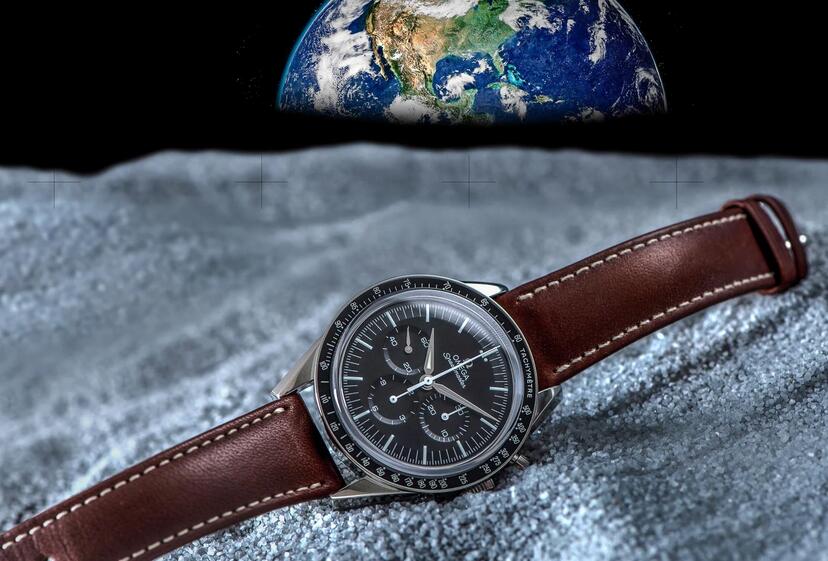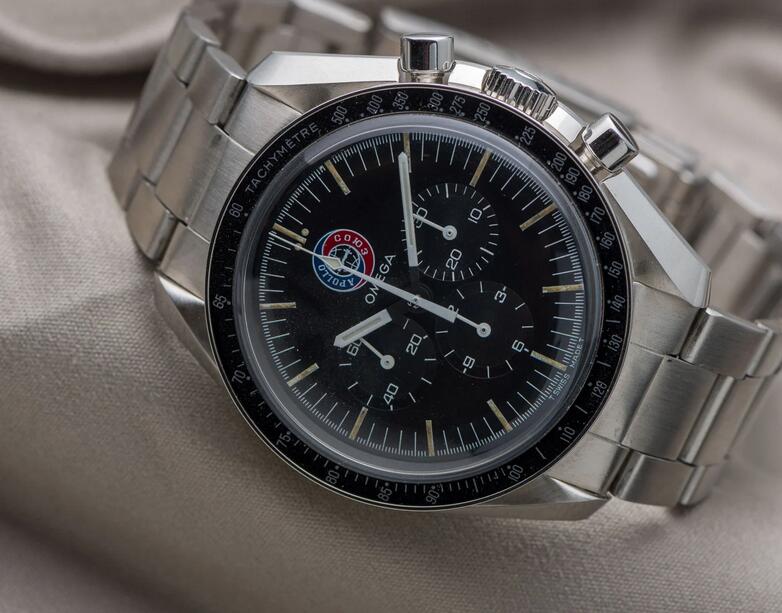As a collector of cheap Omega Speedmaster replica watches, I have always been attracted to the variations with a white dial. I only succeeded in adding one to my collection (finally) in the early 2000s by acquiring the Omega Speedmaster Professional Moonphase ref. 3575.20. It is the most gorgeous variation of the Moonphase models that I’ve ever seen, and I would like to highlight some other white-dial Speedy beauties today.
White-dial Speedmaster watches
The Omega Speedmaster debuted with a black dial in 1957, and it would not be until 1969 that Omega would show the watch with a “light” dial color (gold). A few Speedmaster Professionals have left the Omega headquarters with blue/gray-blue dials, which are incredibly rare. The first time Omega created a white dial for the Speedmaster was in 1970 with a model known as the Alaska Project, and the brand did so again in 1972 with the UK best fake Omega Alaska Project II watches. These two models were specifically developed and designed for use by astronauts. However, NASA never used these Alaska Project models. Still, Philip Corneille, an expert on space watches, discovered that cosmonauts used it in 1977. You can read about it on Corneille’s blog Moon Watch Universe here.
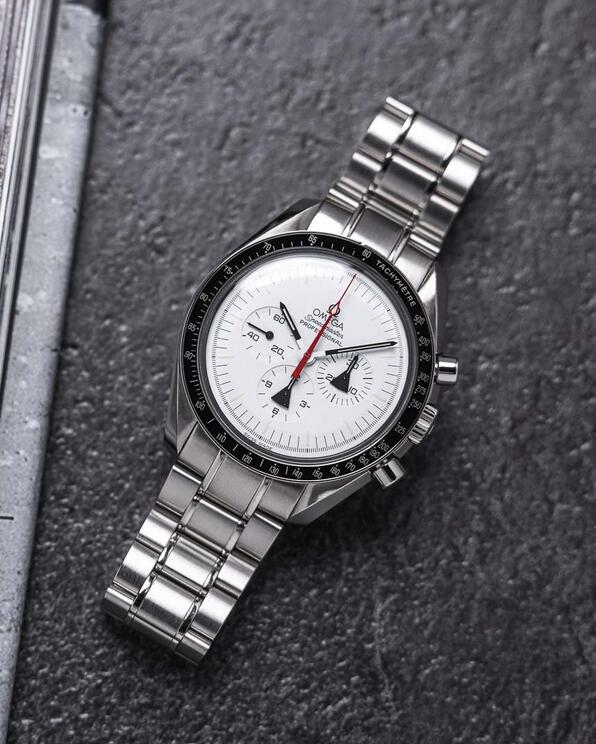
Alaska Project 2008
In 2008, Omega introduced a re-edition of the aforementioned watch, the Speedmaster Professional Alaska Project ref. 311.32.42.30.04.001. This beautiful white-dial top replica Omega Speedmaster Professional watches came with an additional outer red case, just like the one the Russian cosmonauts used. At first, this Alaska Project model wasn’t very popular. We must put this in perspective, though, as the demand for Speedmasters only increased rapidly a few years later. Omega produced only 1970 pieces of this model, which have since become a collectible Speedmaster variation.
The dial of this specific model was white, and the small rocket-style hands were black, whereas the chronograph’s second hand was red. This watch came equipped with a stainless steel bracelet and two additional white Velcro straps. Although I also neglected this luxury Omega copy watches at the start, it has become one of my favorite white-dial Speedmaster Professional models. The steel 42mm case is the same as the then-current reference 3570.50 and has the Lemania-based 1861 chronograph caliber inside. The dial and hands make it a Speedmaster with a very different look compared to the standard Moonwatch, though.
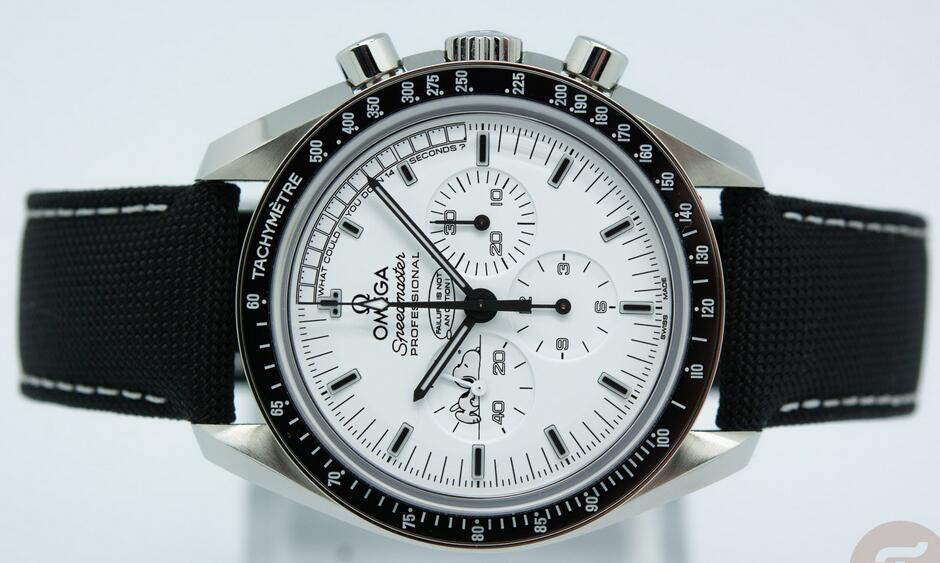
Silver Snoopy Award 2015
I believe that introducing this Speedmaster Silver Snoopy Award model in 2015 drastically changed the game for Omega’s iconic chronograph. It sold out (or rather sold in to Omega boutiques and retailers) in a flash, and there has been an incredibly huge demand for these ever since. Omega only made 1970 of them, commemorating the year that Omega received the Silver Snoopy Award from NASA (you can read about it here). The black and white dial worked well with the famous beagle theme.
Some complained a bit about the text balloon on the dial or the printing of Snoopy in the sub-dial at 9 o’clock. Nevertheless, this model remains one of the most highly sought-after modern high quality Omega Speedmaster replica watches today. The Speedmaster Silver Snoopy Award 2015 case was slightly different from the regular Speedmaster model at the time and had a snap-on case back. Omega put it on a matching black fabric strap with white stitching.

Apollo 11 35th Anniversary, Mitsukoshi, or Tokyo 2020
“Fowl play!” you could say. In 2003, Omega introduced a limited series of 300 Speedmasters with panda dials for the Japanese Mitsukoshi luxury department store. A late friend of mine was able to secure one back then, but many of those you see around now are modified standard Speedmasters. Omega wasn’t too careful about shipping around spare parts in those days, so this model was easy to recreate. One year later, Omega used basically the same design for the 35th-anniversary edition of the Swiss movements fake Omega Speedmaster Professional Apollo 11 watches.
The difference is that it featured “July 20, 1969” printed in red on the dial and a commemorative case back showing the Apollo 11 eagle mission patch. This Speedmaster Professional ref. 3569.31 was limited to 3,500 pieces. In 2018, Omega introduced a set of 1:1 China Omega Speedmaster Professional super clone watches for the Tokyo 2020 Olympic Games (postponed due to COVID-19). One of the five Speedmaster models, with its panda dial, was based on the Mitsukoshi/Apollo 11 35th-anniversary model. We covered them here.

Albino
This Omega Speedmaster Professional ref. 3593.20 (or 3893.20 on a leather strap), introduced in 1997 for the Italian market, doesn’t have a stark white dial. It’s more of a cream or off-white dial, at best. This replica Omega watches for sale commemorated the 40th anniversary of the Speedmaster (1957) and was limited to 500 pieces only. It used a sapphire crystal on both sides, so you could also observe the 1863 movement inside. This caliber was a more nicely decorated version of the standard Lemania-based 1861.
It was introduced around the same time as the 3570.50, the first Speedmaster Professional to use caliber 1861 and Super-LumiNova. The Speedmaster Albino dial and hands also featured Super-LumiNova. This Swiss made fake Omega watches is extremely popular with collectors and enthusiasts, but with only 500 pieces in existence, it is not easy to find. The clean dial makes it a very wearable and likable version of the classic Speedmaster Professional.
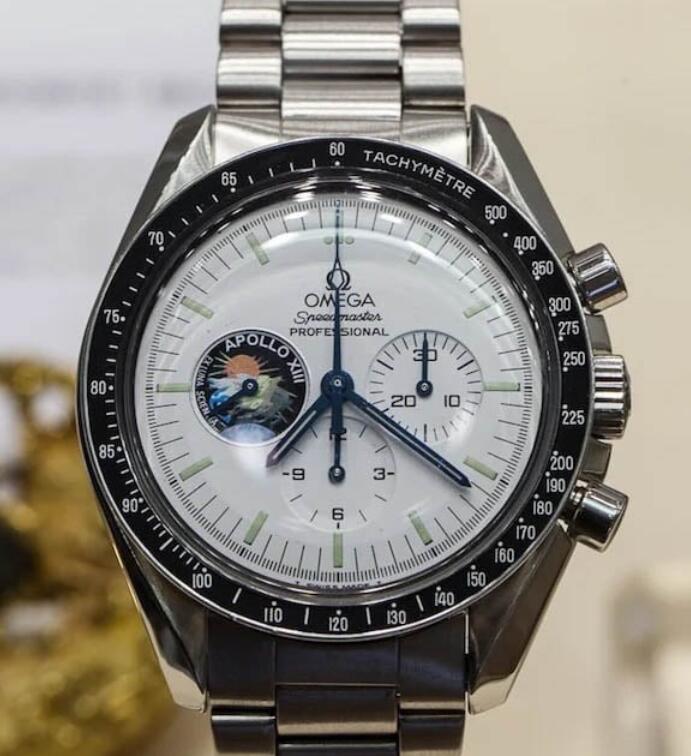
Apollo XIII prototype
Here’s the one Speedmaster you can’t have, no matter the funds you are willing to bring to the table. It’s a prototype of a Speedmaster Apollo XIII commemorative edition, and it resides in the Omega Museum in Biel. Many years ago — I think it was even during my first visit to the museum back in 2011 — I was able to take a picture of this specific Omega replica watches for men. The white dial has an Apollo XIII mission patch at 9 o’clock and is topped with blue hands. The dial and hands have tritium lume, as all Speedmasters did at the time (1995). Since this is a put-together watch, I assume that Omega just took an older bracelet (1171 or 1450) and used the caliber 861 chronograph.
Is it time for a new white-dial Speedmaster in the collection?
Omega introduced some other white-dial Speedmaster Professional models over the years. Among them are the bicolor versions from the 1980s as well as the Broad Arrow “Professional” models with a moonphase complication. The ones listed in this article are my favorites, though.
My apologies for the poor Photoshop skills, but the image above is just there to give you an idea of how white-dial wholesale replica Omega Speedmaster Professional watches could look today. As I’ve stated in other articles (and Mike also did here recently), I miss the days when Omega would please us Speedmaster enthusiasts with some variation on the Professional collection. I would love to see some (new) variations on the classic Speedmaster, and I wouldn’t mind adding a new white-dial version to my collection.

